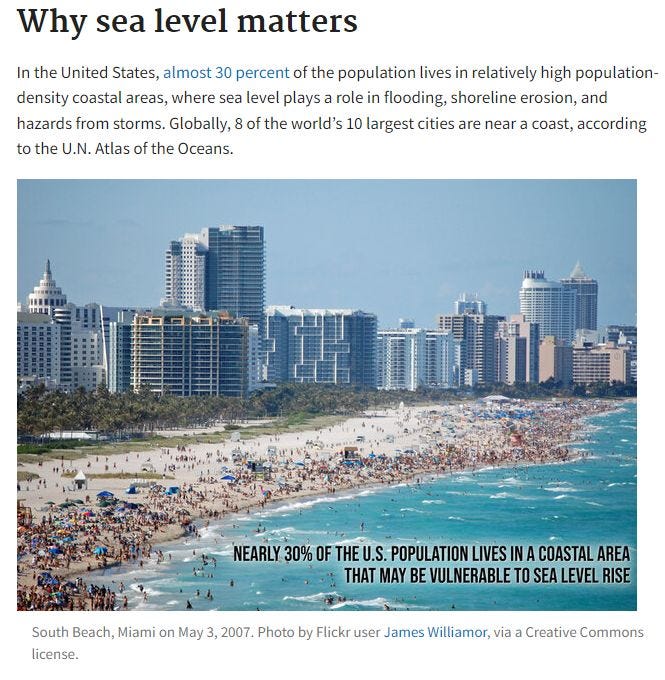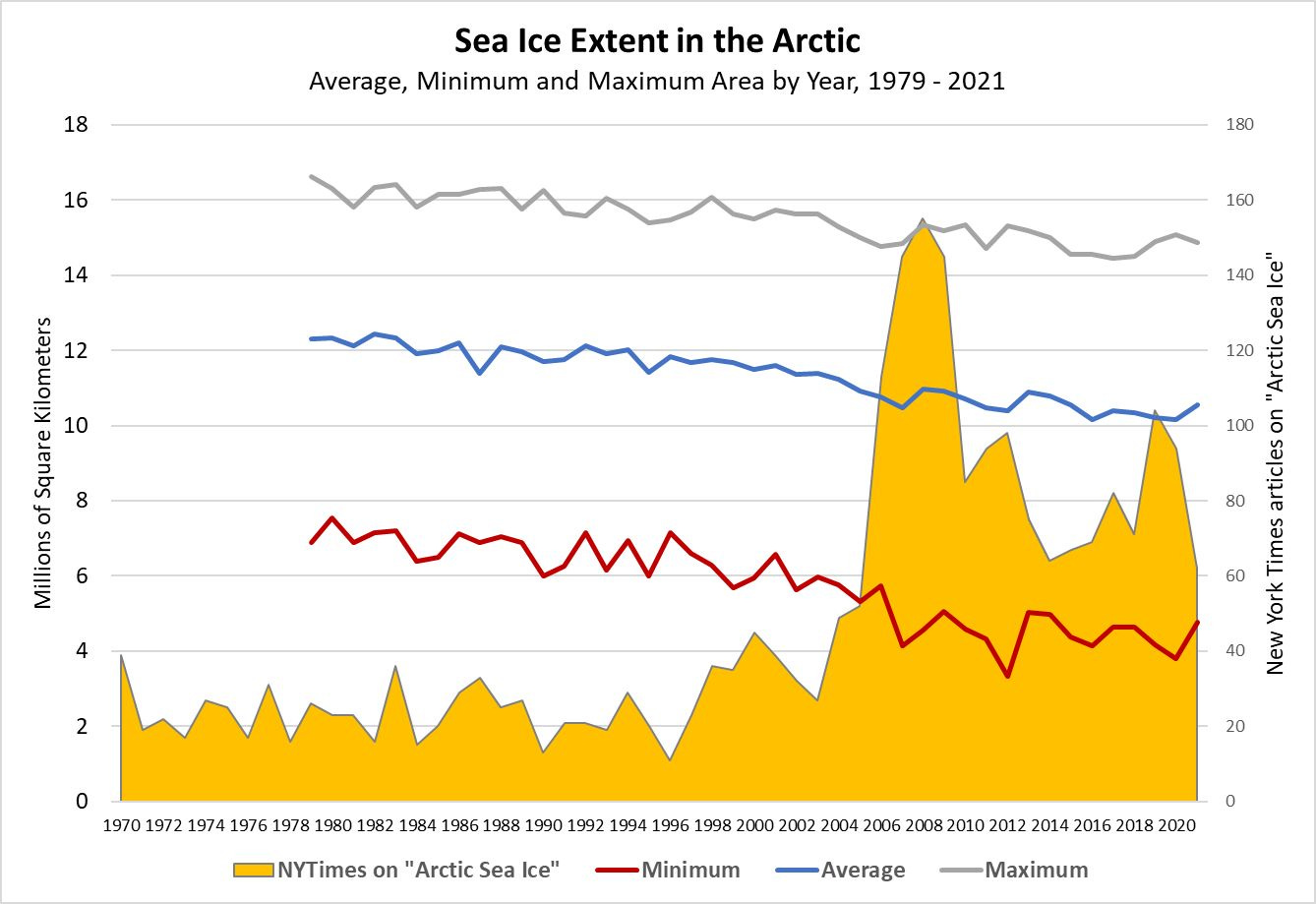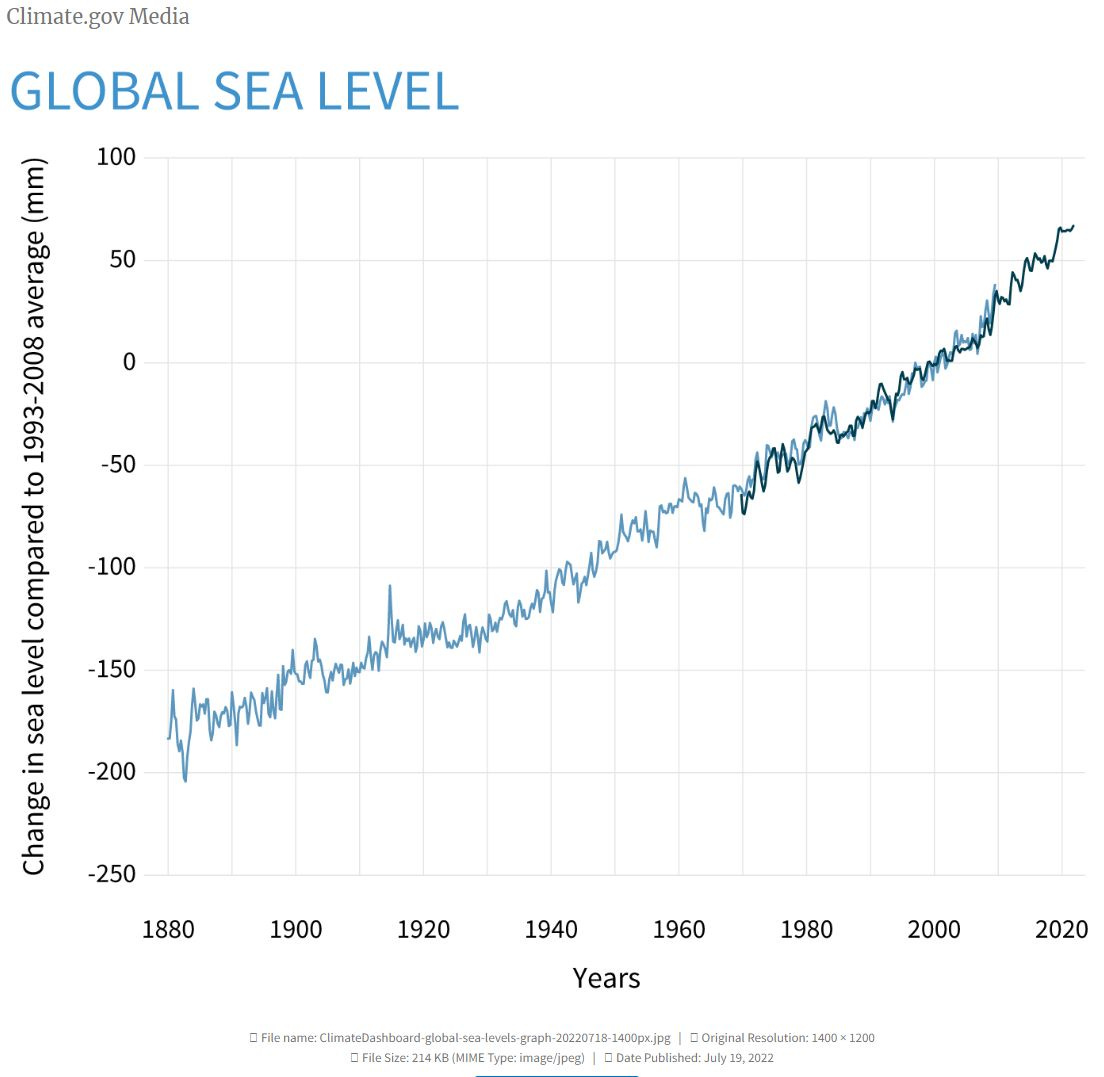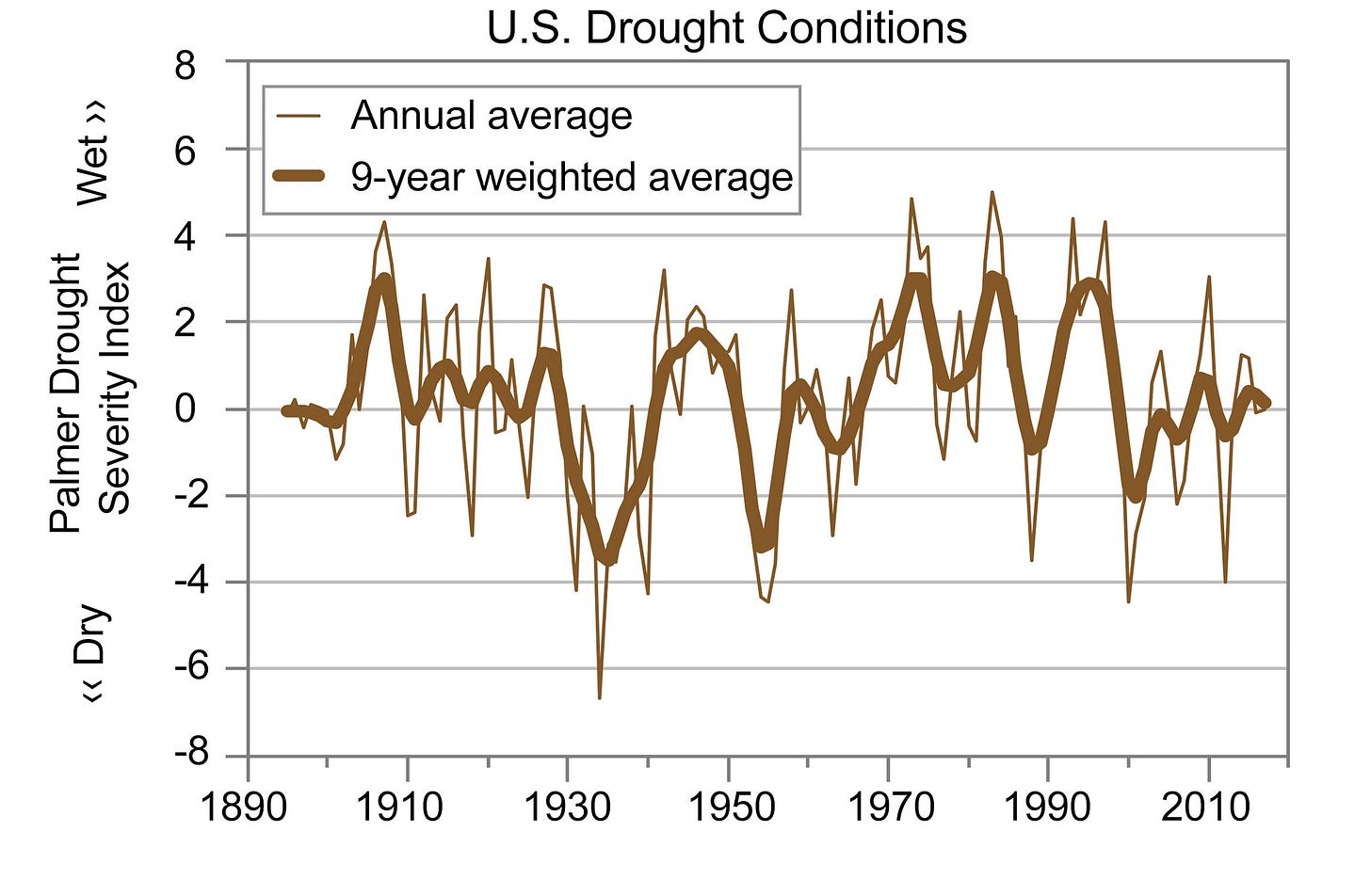I showed up at my gym, the local YMCA. I went down to the men’s locker room to stash my stuff away. Two older gentlemen were there. They had each wrapped up their own exercise sessions and were chatting about this and that. One fellow volunteered to the other something about the perils of Climate Change™ and went on to observe that, in the face of the obvious perils, people were still buying beach-front properties in Miami. Were these people being myopic? Just plain stupid? And, what about insurance companies, the people who make a profession of worrying about important hazards? Were they being myopic and just setting themselves up for big losses? Will not those beach-front properties soon give way to inundation? If so, how should we think about such puzzling behaviors?
One possibility is that the insurance companies and the people living along the coasts know what they are doing. Seas may or may not be rising. Either way, there is no great rush to run for the hills.
We all know that this business of rising seas is just part of the larger narrative of “anthropogenic climate change”: Human activity over the last 150 years or so has contributed to the carbon content of the atmosphere. Carbon dioxide is a “greenhouse gas”. Thus, artificially juicing the atmosphere with carbon dioxide will induce global warming. Global warming is bad because … it will induce desertification? Agricultural yields will collapse? Global famine will ensue? On top of that, the ice caps will melt and the seas will rise. Warmer waters will expand and thus contribute further to the rise of the seas. Whoever will have not already succumbed to famine will have to retreat to higher ground further inland. An already over-populated planet will have to accommodate the remaining population on a smaller shrinking landmass.
The National Oceanic and Atmospheric Administration (NOAA) lays out how the rise of the seas maps into the narrative at its Climate.gov site: https://www.climate.gov/news-features/understanding-climate/climate-change-global-sea-level
It turns out that rising seas and global warming comprise just one iteration of a long-running narrative about the unsustainability of humanity on planet earth. Paul Ehrlich, the author of the Population Bomb (1968), had already predicted that much of the world’s population would succumb to famine by the late 1970’s, and he didn’t need to appeal to global warming to make his point. Indeed, that was before The Science™ got caught up in the global warming narrative. In fact, by the late 1970’s, The Science had already allowed itself to get distracted with global cooling. The experience of the winter of 1977 made it easier for The Science to take it up. I remember as a kid reading in the December 1977 issue of National Geographic magazine an article titled “The Year the Weather Went Wild.”
Even Leonard Nimoy, Mr. Spock from the original Star Trek series, gave his name and time to a 1978 documentary on the matter:
There is little doubt that someday the ice will return. At least eight times in the past million years it has advanced and retreated with clockwork regularity. If we are unprepared for the next advance, the result could be hunger and death on a scale unprecedented in all of history.
What scientists are telling us now is that the threat of an ice age is not as remote as they once thought. During the lifetime of our grandchildren, Arctic cold and perpetual snow could turn most of the habitable portions of our planet into a polar desert.
He continued:
In 1977, the worst winter in a century struck the United States. Arctic cold ripped the Midwest for weeks on end. Great blizzards paralyzed cities of the Northeast. One desperate night in Buffalo [New York], eight people froze to death in marooned cars…
The brutal Buffalo winter might become common all over the United States. Climate experts believe the next Ice Age is on its way … At weather stations in the far north, temperatures have been dropping for 30 years. Seacoasts long free of summer ice are now blocked year-round.
One can wonder what the polar bears would have had to say about all that.
Meanwhile, it is a great shame that we do not have satellite records of “sea ice extent” in the Arctic or Antarctic before 1978. Had it been increasing over the previous three decades? Satellite surveillance did commence in 1978, and, within a few years that surveillance started to generate daily records. Here is what the daily record of sea ice extent in the Arctic shows from July 2007 through July 2022:
My source is the National Snow and Ice Data Center (NSIDC). (Yes there is such a thing. Government gets bigger and bigger and creates new business for itself all the time.) The data can be a little hard to find: https://masie_web.apps.nsidc.org/pub/DATASETS/NOAA/G02135/north/daily/data/N_seaice_extent_daily_v3.0.csv
What do we see? Sea ice varies widely over the course of a year. Specifically, sea ice in the Arctic has been ranging between a February/March high of about 15 million square kilometers (about 5.8 million square miles) and a September low of 5 million square kilometers (1.9 million square miles).
The annual average, indicated by the red line in the graph, has itself barely deviated from an average of about 10.7 million square kilometers (4.1 million square miles). I get these results simply by regressing daily sea ice extent on time. Measured this way, there is no statistically distinguishable trend in the average coverage of sea ice in the Arctic. The statistics say that there has been no change in sea ice extent over the last 15 years.
Meanwhile, here is what the Arctic looks like near its maximum this year (2022):
And here is what it looked like near its minimum in September of last year (2021):
The point of exhibiting data from the last 15 years is to demonstrate (1) an important fact (sea ice extent has been very consistent these last 15 years), but (2) it would irresponsible to leave the story at that. We may only have access to data that amount to a blink of the eye in geologic time, but we do have data going back to 1978, and those data do tell a more elaborate story. So, here goes:
Average sea ice extent in the Arctic had been declining by nearly 60,000 square kilometers per year from 1978 through 2007. Again, we can only wonder if it had been increasing from about 1948 through 1978, but we do not have those data. Meanwhile, note that, in September 2007, sea ice extent hit the lowest point recorded in the satellite records up to that point. The 2007 nadir in Arctic sea ice extent inspired a lot of media attention. Consider this graph:
This graph features the annual peak, annual average, and annual nadir in Arctic sea ice extent from 1979 through 2021. The graph also features the number of articles each year in the New York Times that made contact with “Arctic” and “sea” and “ice”.
I had been thinking that journalists used to give the Arctic more attention up through at least 2012, and there may be something to that. Specifically, note the 2008 peak in reporting in the Times, and note that the Times had started devoting more attention to sea ice in the Arctic starting in the late 1990’s. The annual maximum in sea ice extent had been declining over the years. The annual average had been declining. The minimum had been exhibiting the greatest decline of all—hence all of the reports about how the Arctic will be “ice-free” by year such-and-such. For example, in 2009, John Kerry, then the junior senator from Massachusetts, predicted that the Arctic would be ice-free by 2015. He proved to be off by about 4.4 million square kilometers. But, one cannot deny broad evidence of decline from 1978 to at least 2007.
And, so what?
One might say that evidence that the ice cap in the Arctic has declined up through 2007 is evidence of warming. But, again, so what? Why should folks get worked up about warming? Because agricultural production is being harmed? It is not—not by warming. Meanwhile, agricultural production is right now being harmed by public policy initiatives. The most spectacular example would be the destruction of agricultural productivity in Sri Lanka. Sri Lanka banned the use of fertilizers made from nitrogen extracted from the air. On a parts-per-million basis, the air we breathe is about 40% nitrogen and 0.0004% carbon dioxide. Central authorities around the world have been waging a war on CO2 for a little over 30 years, and those same authorities have now opened a new war on nitrogen. When will the madness stop?
Not in Sri Lanka. The central authorities have since taken the war on the road to the Netherlands and will soon be taking it to Canada.
Meanwhile, we do have some evidence that the seas have risen about 25 centimeters over the last 140 years. Cue our friends from Climate.gov:
One would be hard pressed to establish a causal link between carbon content in the atmosphere and the rise of the seas at a rate of 1.8 millimeters per year. Our friends on Miami Beach can enjoy themselves for some time yet. And, if anything, they should worry about the fact that the seas have been rising for about 20,000 years. Perhaps profound processes bigger and way more salient than man and his machines are at work.
In another essay I might examine sea ice extent in Antarctica. One used to see silly articles in which hysterical scientists proclaimed that ice bergs the size of the state of Rhode Island had broken off of the Ross Ice Shelf. Just punch in “Ross Ice Shelf” and “Rhode Island” in to any search engine and marvel at the number of relevant hits. Here’s a good one from Scientific American in 2002 titled “Climate Warming Causes Collapse of Antarctic Ice Shelf”:
Over the course of 35 days, 3,250 square kilometers of shelf area disintegrated--an area larger than that of Rhode Island.
One can imagine that ice bergs bigger than Rhode Island had also broken off from the Ross Ice Shelf 40,000 years ago or 400,000 years ago, well before anyone had been around to name the Ross Ice Shelf the “Ross Ice Shelf.” The suggestion, of course, is that “The ice is melting!” We’re doomed. It’s the opposite of “Winter is coming.”
Let me put Antarctica aside for another day, but, for now, I will leave you with this nice little piece that I stumbled on today, courtesy of the U.S. Global Change Research Program https://www.globalchange.gov/indicators:
Lower values of the “Palmer index” are consistent with drought. Higher values indicate wetter conditions. We only have data going back to 1890, but by the standards of these data, the here and now is looking awfully average and boring. What “climate emergency?”













Greetings, Steve --
I am tuning up a piece on sea ice around Antarctica right now. Your comments motivate me to explicitly revisit "chaotic," "dynamic processes," basically, the idea that it is really hard to make predictions that are any good more than just a little out into the future.
So, I will be revisiting Edward Lorenz (1969) on "the Butterfly Effect" as well as the "Nobel Prize Weatherman" Ken Arrow.
So, three points for now. First, it seems plausible to suggest that the sea ice process around Antarctica is harder to get a grip on than the process in the Arctic, because a big land mass right at the South Pole is involved. Second: The Science and the media always present the sea ice processes as deterministic, linear processes when it suits their purposes. But, if these processes are chaotic, then maybe the science and media aren't really any good. Third: The ultimate point is "So what?" Sea ice processes are complex and defy long-term prediction. The Science and the media slyly suggest that human activity can channel these complex processes, but The Science really can't establish a mechanical, causal relationship. There are big, inexorable, complex, long-run processes at work. Just getting a grip on those would be fun, but the conceit that we can intervene effectively in these things may be just that: a conceit.
Thanks for your excellent article. I have read that Antarctic ice is increasing except for one area which is thought to be melting due to geothermal activity although overall it is increasing.
I also wondered if the thickness of the ice should be taken into account?
One last comment. The Guardian has reported things like "Sea levels to rise by 200feet" which would take about 20000 years on current rates of rise. I think we can cope with that. I don't understand what their motives are.